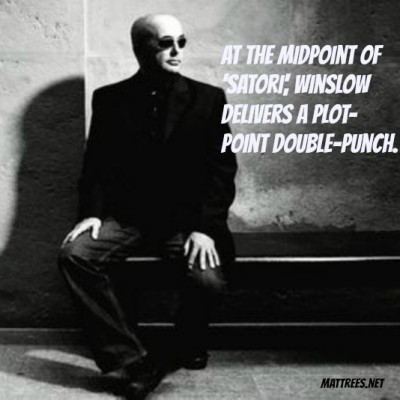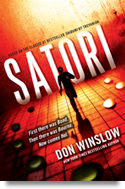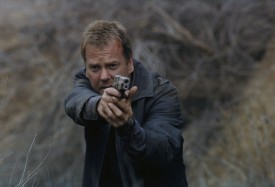The key to the pace of a thriller lies in the Midpoint
 The Midpoint is a plot point that lies, of course, at the halfway point of the book. What does it do? It propels the hero out of the first part of Act II, where s/he has been encountering new signs of the bad guys and their dirty dealings. It shoots the hero into the breakneck action of the second part of Act II, where the bad guys close in on the hero, trouble piles up on the hero, and it looks as though s/he is going to lose.
The Midpoint is a plot point that lies, of course, at the halfway point of the book. What does it do? It propels the hero out of the first part of Act II, where s/he has been encountering new signs of the bad guys and their dirty dealings. It shoots the hero into the breakneck action of the second part of Act II, where the bad guys close in on the hero, trouble piles up on the hero, and it looks as though s/he is going to lose.
How do you create a good Midpoint? A couple of tips:
- Kill someone to add a heightened element of danger and a new impetus for the hero’s chase
- Introduce a new character whose presence adds to the danger
- Change the nature of the threat to the hero dramatically
 The king of the threat-change is Don Winslow. Read his fabulous Satori for an example that’ll take your breath away.
The king of the threat-change is Don Winslow. Read his fabulous Satori for an example that’ll take your breath away.
Without giving too much away, the reader spends the first half of Satori thinking the hero has to do a particular thing, after which he’ll be safe. Instead, at the Midpoint of Satori, Winslow delivers a plot-point double punch. The hero accomplishes that particular thing — at great risk and with much tension. Only to discover immediately that he has been betrayed. For the rest of the book, he faces entirely new risks. The reader experiences the same sudden shift and confusion as the hero. That means, tension. Which is a good thing in a thriller.
 The show 24 does this too. Ever noticed how Jack Bauer is fighting one lot of bad guys for the first 12 hours, only to realize half way through the season that the real bad guy is someone completely different with an entirely different plan?
The show 24 does this too. Ever noticed how Jack Bauer is fighting one lot of bad guys for the first 12 hours, only to realize half way through the season that the real bad guy is someone completely different with an entirely different plan?
Works, doesn’t it?

 Write a thriller: Find a good ‘What if’
Write a thriller: Find a good ‘What if’
Leave a Reply